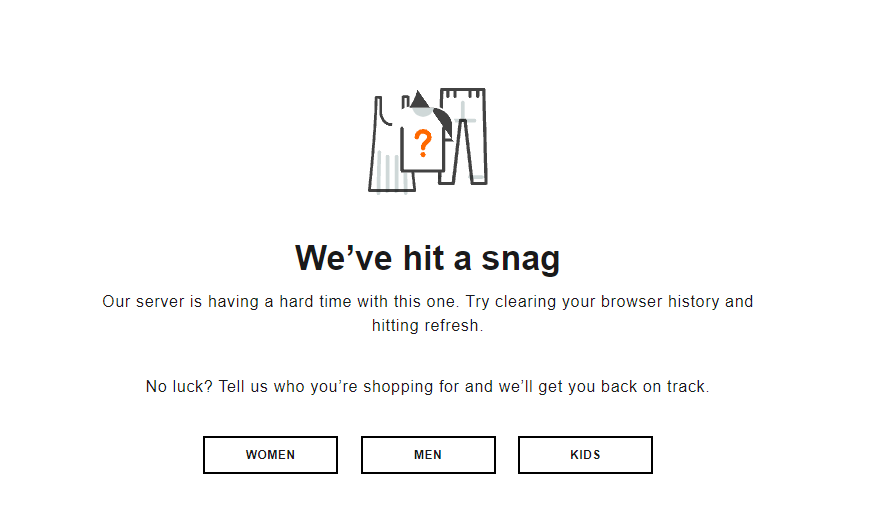Our websites use cookies. By continuing, we assume your permission to deploy cookies as detailed in our Privacy Policy.
What Is the Right Tone of Voice When Talking to Customers?
We all have heard, “Don’t you take that tone with me!” at some point when we were out of line when talking with our parents, which has given us an idea of the right tone when talking with someone and started the foundations of language usage in different situations. With this in mind, building the same skill when talking with customers is a must when it comes to being a successful communicator in your professional life.
What Is a Tone of Voice?
In in-person communication, we take clues from the other person via verbal, sonic, and visual clues to determine the feelings that are being conveyed. While some of these clues can be missing in written communication, we use our ability to interpret and understand to detect the underlying layer of emotions in words.
This interpretation and deeper understanding of both oral and written communication are what we deem as “Tone” and sets the attitude of conversations. For example, while “you” and “customer” could mean the same person, they differ in tone. Looking at how an audience perceives these two words, using “you” creates a warm and friendly engagement tone. On the other hand, “customer” puts distance between the brand and its audience, making the setting more formal. This explanation of “tone” can be applied to many aspects of a business and how customers perceive it, affecting both the customer and the brand itself.
Therefore, it is an integral and essential part of businesses to create an environment that consistently reflects their brand image. If done correctly, the brand image that aligns with the company’s vision will yield better results in engagement and understanding than an inconsistent “tone” of voice.
Why Is “Tone” Important in Written Communication and Building a Brand Image?
The tone is essential both in in-person and written communication as it adds another layer of meaning to the message that needs to be conveyed. Although it is used to determine the emotions that need to be conveyed through both oral and written communication, this article will focus on the non-verbal communication aspect of “Tone” since non-verbal communication is the type of communication that can be easily misinterpreted.
When engaging with a customer, it is vital to consider the tone of the conversation, as taking a different tone than the one that the customer expects can undermine both the relationship with the customer and cost you future business.
On the other hand, using a tone that is clear to understand and is in line with your brand image when it comes to customer expectations will build a long-lasting relationship with the customer that will keep both parties engaged and content.
What Is the Right Tone of Voice for Your Brand Image?
The right tone of voice varies from business to business, and it mainly depends on the target audience that the brand wants to reach. However, there are specific steps to take towards understanding the tone your customer expects:
Engaging With Your Target Audience/Customers
This can be achieved by many different methods; however, one of the most effective ways is to interact with your customers on a level playing field. One way to achieve the level playing field is by interacting with your customers through social media channels such as Twitter.
A way that certain brands like Ebuyer, one of the largest independent online retailers of computer and electrical goods in the United Kingdom, likes to post questions, observe their answers and interact with them.
We can observe that Ebuyer, while not directly related to the brand, is asking questions to their customers that lets them express themselves. By doing this, Ebuyer gains a deeper understanding of its target audience.
Social media is essential here as it is a level playing field when it comes to expression, and the brands can pick up on clues such as the tone of their customers to match their brand’s voice to suit their audiences better. This approach allows them to understand the tone their customer expects better.
Defining the Core Values of Your Business and Improving Your Tone of Voice in Alignment With Them
Transparency and communication are of utmost importance when it comes to building trust with your customers. The significance of this becomes apparent when you consider that 65% of customers will develop emotional connections to brands that align with their values and are genuinely interested in their customers.
There are a couple of questions that your brand needs to ask itself:
- What are the things that make your brand unique?
- What values do your brand and your target audience have in common?
- What do you stand for as a brand?
Asking these questions will help you create your brand image and establish a brand voice. With these questions in mind, you will be able to proceed towards a brand identity that is concise and aligned with your audience.
While the questions mentioned above are just the tip of the iceberg when it comes to finding your brand’s voice, they will help you get an idea of what tone of voice your audience expects of you.
What Are the Different Types of “Tone of Voice” Based on Your Target Audience? (Examples from Brands)
While there is no “one size fits all” answer to this questions, here are some examples of brands, their target audience, and their tone of voice:
Zalando
As a fashion and lifestyle e-commerce company based in Berlin, Germany, Zalando is all about being free and expressive. In 2019, they rebranded their brand’s voice as “express a powerful truth about fashion: when we’re free to be who we want and wear what we want, nothing can hold us back.”. This shows us that the Zalando customers are expecting more than a shopping experience; they are expecting “a richer experience; to align with the company’s values beyond the product or service alone. Our most loyal and engaged customers have a much deeper relationship with us.”.
With this attitude in mind, Zalando takes a much more relaxed approach when it comes to their brand’s voice. As a result, we can see this expressive and informal tone in their online presence.


As a company with a target audience in a younger demographic, Zalando’s tone is in line with both the expectations of their customers and their brand’s core values, therefore, standing out from the rest of fashion e-commerce websites.
McKinsey & Company
On the other side of the spectrum, McKinsey & Company, a management and consulting firm, takes a more helpful, authoritative, and uplifting approach with their brand’s voice, separating them from a brand that uses a non-serious and informal tone. This serious tone is more in line with the expectations of their industry and audience.

With sentences such as “How can we help you?”, they approach their customers with the intent to help them and elevate their businesses by offering their services.

Since their target audience is companies interested in management and consulting, they use a tone of voice that aligns with their target audience’s expectations of a helpful and uplifting consulting firm.
Different Types of Brand Voice
Do different situations require different tones? In short, yes.
Looking at the examples above, we can see that different companies require different approaches to tone. It is vital to the brand that this tone is consistent with the image that the brand wants to convey to its customers and that this tone stays consistent with its core values. Failing to achieve a tone that aligns with your company and is consistent will alienate your customers and cost you potential business.
Keeping this in mind, while there isn’t one right way to follow your brands’ voice, here are some examples to guide you to your brand new voice:
1. Informative Tone
When someone first comes to your site, what are they after? The answer is simple: They want to know what exactly your company does and how you can help them with the problem they’re currently contending with.
In that case, you should take on an informative and helpful tone. The visitor should feel as though a very interested customer service representative just greeted them and is curious about how they can help.
While using an informative tone, you should avoid using your passive voice. For example, when giving information to your customers about how they can contact your brand, don’t use a passive voice. By avoiding the passive voice, you will be able to talk directly to your customer and show that you are there to meet their needs.
As you are writing with our customers in mind, you should talk to them directly. For example,
Don’t say: Please email Segmentify at info@segmentify.com
Use the more active counterpart: You can email us at info@segmentify.com
This approach will communicate to your customers that you are there for them to talk to and get guidance about their problems. When done correctly and in line with your brand image, this is generally not a bad tone to keep throughout your site.
2. Authoritative Tone
Maybe you’re using your website to pitch yourself as a speaker or consultant. While you still want to be informative, it’s even more critical that you’re authoritative. You need to convince people that they could benefit from your superior knowledge base. The tone you use should help to impress them.
We can observe this tone in consultancy firms such as McKinsey & Company. As a consulting firm, they benefit from showing their authority when it comes to their years of consulting work and their spot in the consulting industry. As a result, this tone lets potential clients know their experience and know-how in their industry and helps them decide if they would like to work with them.
3. Witty and Funny Tone
Trying to be witty and funny as your brand’s voice can be very, very difficult. As we mentioned earlier, it is very easy to be misunderstood and come off as condescending instead. You can also alienate your customer if this tone does not fit your brand well, which is never desirable, either.
Nonetheless, if you’re able to pull it off, a humorous tone can reap massive rewards. And entrepreneur James Altucher has mastered this tone. Despite being featured in Forbes, The New York Times, The Wall Street Journal, and countless other impressive publications, it’s the only one he uses.
Here are some of his tongue-in-cheek titles of blogs that have gone viral:
- How to Be the Luckiest Guy on the Planet in 4 Easy Steps
- 10 Reasons You Need to Quit Your Job
- The Seven Habits of Highly Effective Mediocre People
Altucher’s demographic tends to have already read other self-help books and blog posts, so they value someone who recognises that and can play with their expectations a bit. As a result, his choice of tone of voice works perfectly for him and his audience.
So, How Do You Pick the Right Tone for Your Brand?
As a brand, it is important to establish this early on to learn your core values and market them to your customers in a light that does not alienate them. By examining your brand identity, in turn, you are allowing yourself to choose the right tone of voice when it comes to interacting with your customers, improving the connection between your brand and your customers.
This connection with your customers does not only lead to one-time sales. Instead, it creates loyal customers who feel right at home when it comes to your brand—building a community of loyal customers who use your services and give you vital feedback to elevate your brand further.
When it comes to eCommerce, as the marketplace becomes more and more competitive, the prices for logistics and production are skyrocketing to places that are hard for many to cover. However, when a brand can create a community by using its brand voice that is attractive to its target audience, it can receive valuable feedback that helps the brand foresee its expenses for logistics and production.
Foreseeing which products will be worth the hassle of production and transportation can be achieved with the help of the feedback you are receiving from your customers. While you can examine the sales data for your products, you won’t be able to get as much information and feedback. The feedback you get through a level-playing field such as Twitter or other social media will be more in touch with reality and customers’ experiences, thus more valuable.
The customers giving feedback to companies are there to lead the brand into decisions that they would be happy to go along with. Their feedback can give you foresight into decisions that otherwise would cost your brand financially and alienate the customer base you are trying to reach.
As mentioned above, skyrocketing prices of production and logistics are one of the many elements affecting eCommerce websites. While it is not the only factor that will eliminate this problem, brand marketing will help with this problem and help your brand cut costs that otherwise would affect your brand’s profits.
While there is no right or wrong answer to this question, the best way to pick the right tone of voice for your brand is to talk with your customers and take their feedback into consideration since they are the cornerstone of your brand when it comes to further progress. In addition, the way you decide to market your brand will determine the success and the relationship you will have with your customers and whether or not they will be loyal to your brand. This is why choosing the right tone of voice is essential for brand marketing.








